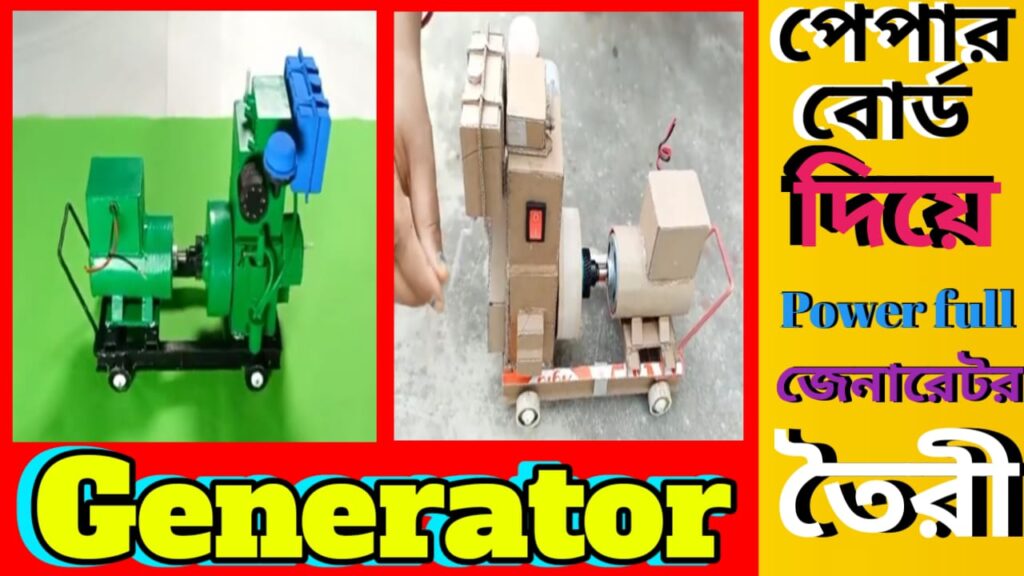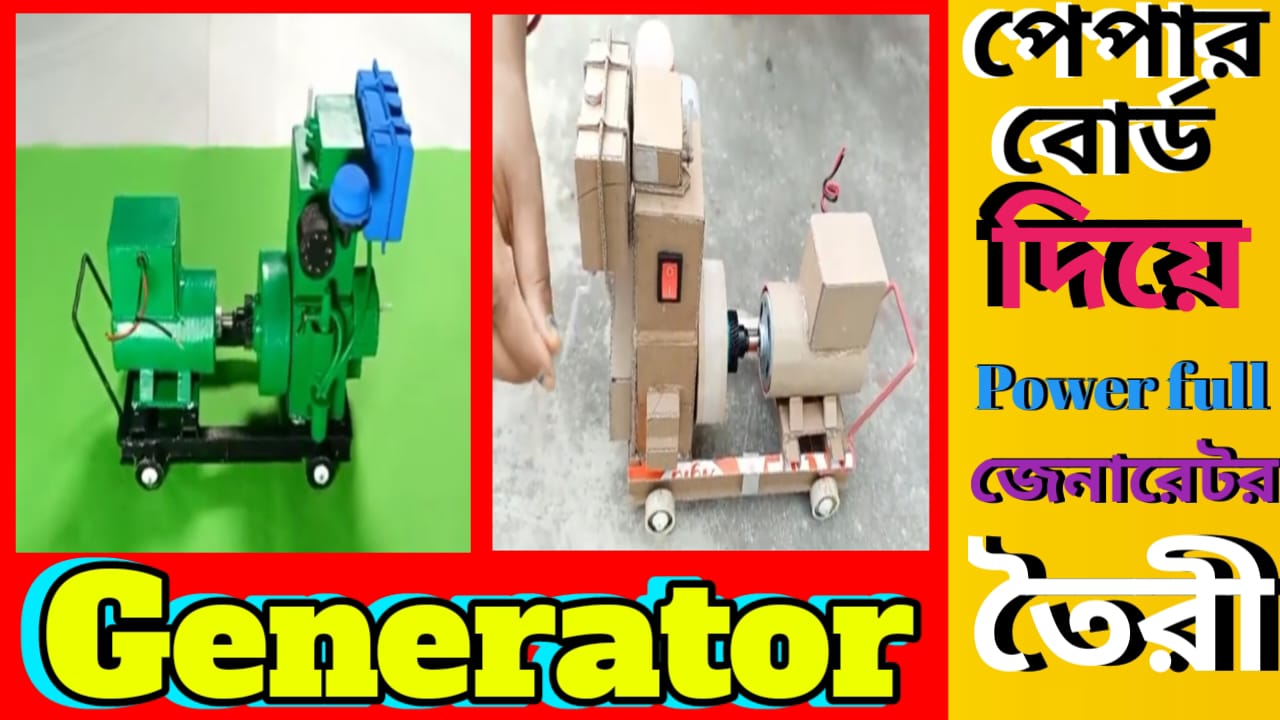Introduction
In the vast realm of do-it-yourself (DIY) projects, building a DC motor from a powerful mini generator has gained immense popularity. DC motors find applications in various fields, from hobbyist projects to educational endeavors. This article aims to guide you through the process of creating your own DC motor using a robust mini generator and some cardboard. Let’s dive into the exciting world of hands-on engineering

Understanding the Components
Before we embark on our DIY adventure, it’s crucial to understand the key components involved. A DC motor typically comprises a power source, a coil of wire, a commutator, and a magnetic field. In our case, the mini generator will serve as the heart of our motor, converting mechanical energy into electrical energy.
Gathering Materials
To get started, gather the following materials:
- Sturdy cardboard
- Mini generator
- Copper wire
- Strong magnets
- Insulating tape
- Battery or power source
You can find these materials at local hardware stores or repurpose items from around your home. Embrace the DIY spirit by being resourceful!
Step-by-Step Instructions
- Creating a Sturdy Cardboard Base: Begin by crafting a solid base for your motor using the cardboard. This will provide stability and support for the components.
- Assembling the Mini Generator: Carefully follow the manufacturer’s instructions to assemble the mini generator. Ensure all parts fit snugly and securely.
- Connecting Components for a Functional DC Motor: Use copper wire to connect the mini generator to the commutator. Place strong magnets strategically to create a magnetic field. Connect the coil of wire to complete the circuit.
Safety Measures
Safety should be a top priority when working with electrical components. Always wear appropriate protective gear, and be mindful of potential hazards. If you’re unsure about any step, seek guidance or assistance.
Troubleshooting
Encounter challenges during the build? Common issues include loose connections and misalignment of components. Double-check your work and refer to troubleshooting tips online for guidance.
Benefits of Making Your Own DC Motor
Aside from the satisfaction of creating something with your hands, building a DIY DC motor offers numerous benefits. It’s a fantastic learning opportunity for understanding the principles of electromagnetism and engineering. Plus, it’s an eco-friendly alternative to purchasing mass-produced motors.
Applications of DIY DC Motors
Once you’ve mastered the art of creating your own DC motor, the possibilities are endless. Explore creative projects such as homemade fans, simple robots, or kinetic sculptures. Your DIY motor can be the powerhouse behind various inventions.
Personalization and Modifications
Don’t hesitate to experiment with different designs and configurations. Add your personal touch to the project, whether it’s a unique paint job or a custom base. The more you personalize, the more pride you’ll take in your creation.
Showcasing the Final Product
Document your journey and share the results with the DIY community. You never know who you might inspire to embark on their own motor-building adventure. Showcase your creation on social media or DIY forums and bask in the admiration of fellow enthusiasts.
Conclusion
Embarking on the journey to build your own DC motor is not just a DIY project; it’s a hands-on exploration of science and engineering. By following these steps, you’ll not only create a functional device but also gain valuable insights into the fascinating world of electromagnetism. So, grab your materials, dive into the world of DIY, and let your creativity spark
Thank you very much visiting for Websitehttps://creativitytopper.com
- How To Make DIY Mini bus Project From Cardboard at home. - May 8, 2024
- How To Make Humidifier Spray Module / Mist Maker Project . - April 27, 2024
- How To Make a New Model Subwoofer Box Project by Cardboard - April 15, 2024
